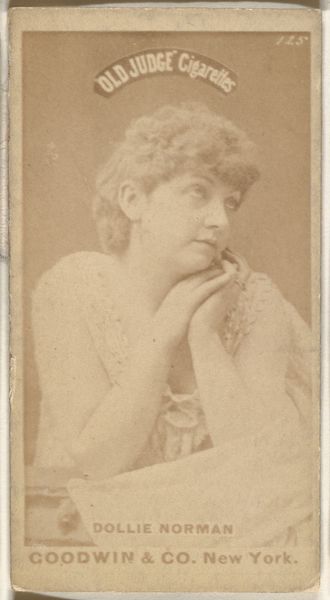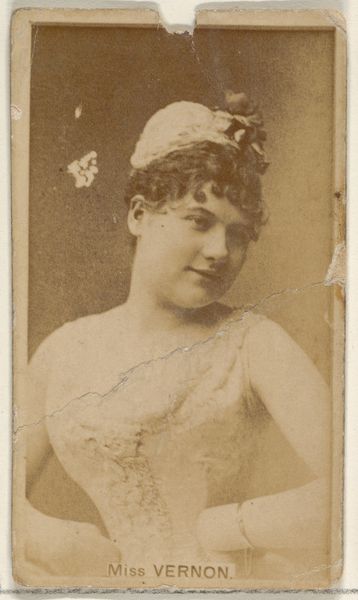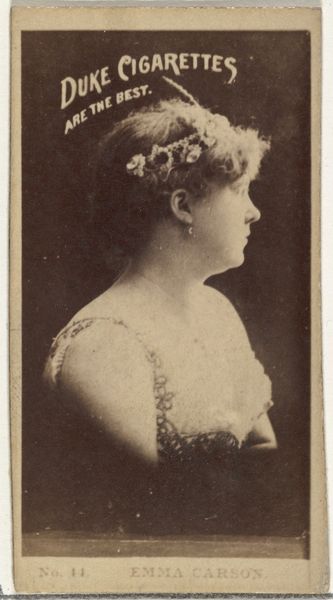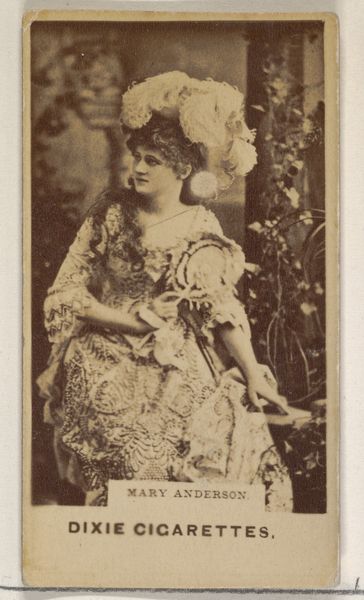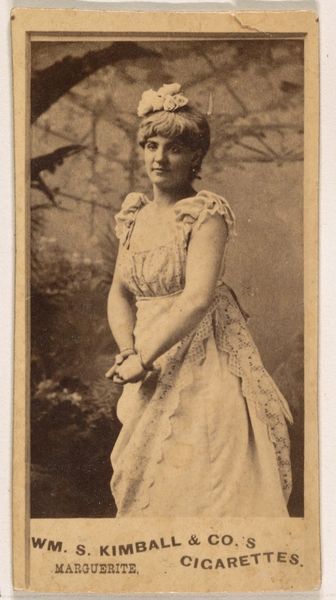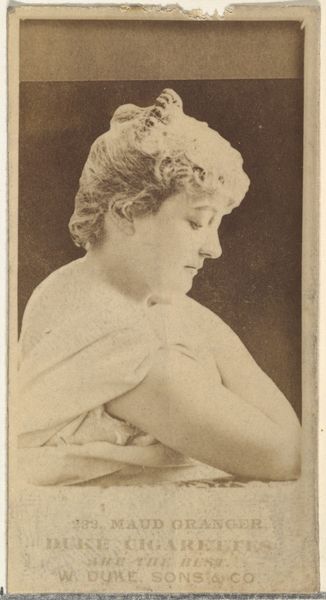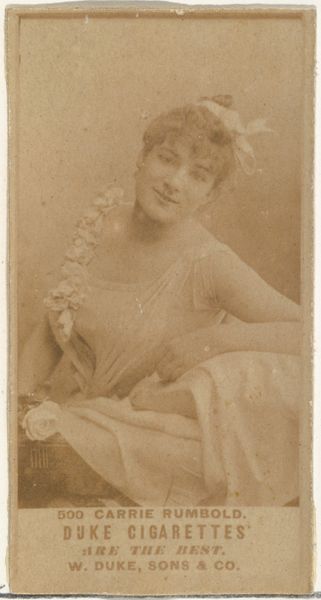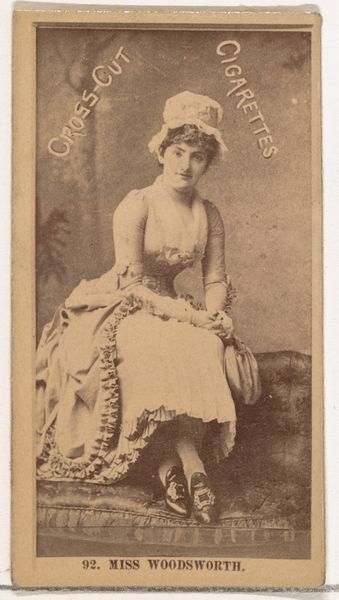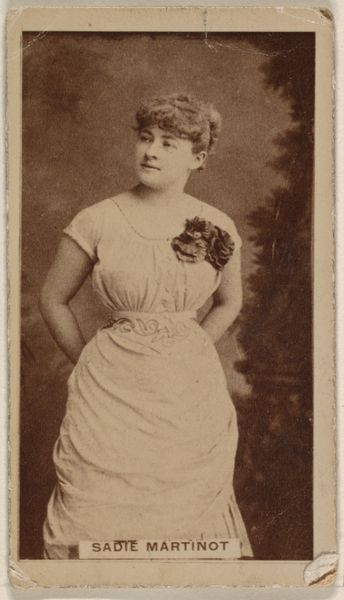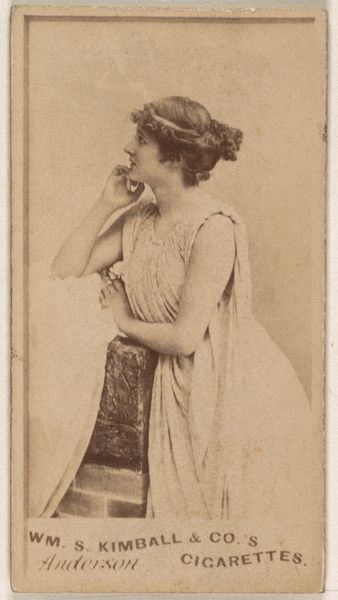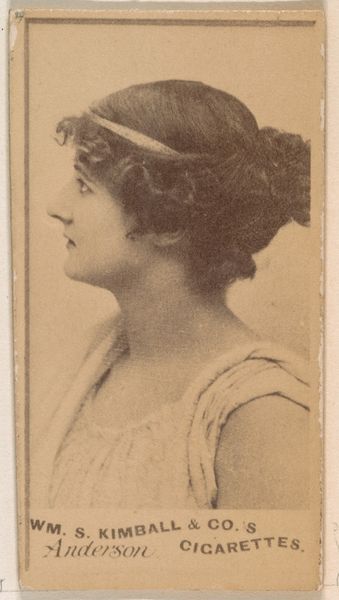
Card Number 207, Lilian Grubb, from the Actors and Actresses series (N145-5) issued by Duke Sons & Co. to promote Cameo Cigarettes 1880s
0:00
0:00
drawing, print, photography
#
portrait
#
drawing
#
pictorialism
# print
#
photography
Dimensions: Sheet: 2 11/16 × 1 3/8 in. (6.8 × 3.5 cm)
Copyright: Public Domain
Curator: Here we have an intriguing card from the 1880s. Part of the Actors and Actresses series, this particular card, number 207, features Lilian Grubb and was issued by W. Duke, Sons & Co. to promote their Cameo Cigarettes. You can find it in the collection of the Metropolitan Museum of Art. Editor: Oh, the sepia tones give it such a wistful, old-timey feel. She almost looks like she’s dreaming, resting her head so delicately on her hand, with those slightly wilted flowers. Curator: Precisely! It’s a fascinating convergence of art, commerce, and celebrity. The photographic print mimics the soft focus and diffused light often seen in drawings. It nods to the aesthetic of pictorialism that was emerging then. It blurs lines, if you will. Editor: Definitely blurs them! The composition feels almost staged, in a very intentional way. The vase, the draping fabric… the slightly off-center placement all works to focus on her as an actress, but as also… like some kind of ideal, detached from any kind of gritty, human reality. I wonder if Cameo Cigarettes were targeting dreamers. Curator: Quite possibly! By associating their product with stage actors, they were tapping into the public's fascination with celebrity culture. Each card a miniature portrait, offering a glimpse into the lives of these stars, or rather, their idealized versions. The textual element at the bottom only reaffirms that sentiment by literally embedding the advertisement *into* the portrait itself. Editor: It's interesting, that the choice was made to advertise through a card. What did these images *mean* to those who collected them? Were they merely decorative? Informational? A bit of both? Either way, by framing the figure in the way it does, by drawing upon portrait conventions that hearken to earlier eras, this photo flirts with the concept of permanence—at least within the lifespan of a small, cardboard-sized product. Curator: These sorts of cultural relics always leave me pondering on questions about legacy. The art endures, long after the product has faded from collective memory, and certainly long after the subject, in this case the actress, has stepped offstage for the final time. Editor: Exactly! Though ephemeral in nature, in its capacity to be lost or destroyed, somehow its impact as art persists. That to me, feels beautifully melancholy and enduring all at once.
Comments
No comments
Be the first to comment and join the conversation on the ultimate creative platform.

